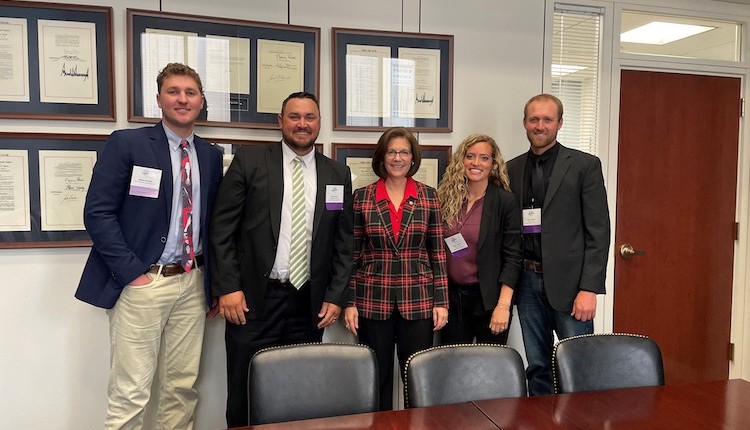
With the many immediate needs on a dairy farm, it’s easy to ignore the risk of natural disasters until a flood, blizzard, drought, or other extreme weather event becomes imminent.
Dairy farmers across the U.S. have experienced a wide range of weather emergencies over the past year — from drought conditions and high winds that caused Oregon dairy farmers to evacuate to a winter storm in Texas that kept milk trucks from reaching farms and processing plants for days. As natural disasters become more frequent and severe, all dairy farmers should consider taking necessary precautions to protect themselves, their workforce, and their livestock.
The best time to prepare a farm business for a weather emergency is before disaster hits. With thorough preparation and annual maintenance, farms can be better protected and more resilient in their recovery. NMPF has developed a webpage to assist dairy farmers as they prepare for and deal with the aftermath of natural disasters. The latest update includes emergency preparedness, workforce safety, and animal care guidance for periods of drought and extreme heat. Resources for dealing with wildfires and hurricanes are among the other webpage offerings.
The first step to prepare a dairy farm for a natural disaster is to establish a comprehensive Emergency Action Plan that provides pertinent information and steps to follow in the event of an on-farm emergency. Written, well-thought-out, well-maintained plans help farmers respond rapidly and with clear thinking during stressful situations. The National Dairy FARM Program has created guidance for what dairy farmers should include in their Emergency Action Plans.
A three-prong approach
Dairy farms face unique natural disaster challenges.
Workforce: Cows must be fed and milked two or three times a day, 365 days a year. To accomplish these tasks, farmers rely on their workforce to maintain operations. However, getting consistent labor can be difficult during weather emergencies.
Energy source: Dairy farmers also rely heavily on a consistent energy source to keep milking machines running, water flowing, and milk in the bulk tank cool. This makes safe, operational back-up power for dairies a necessity.
Action: Emergency Action Plans can help producers think through these challenges and prepare for other potential emergency situations that may be specific to their operation or region.
The long-term view
Climate change has and will continue to have dramatic and unpredictable effects on the dairy industry, and NMPF remains committed to doing its part to provide farmers with the resources they need to adapt to this new normal. In addition to providing tools for dealing with natural disasters in the here-and-now, NMPF continues its work with Congress and the Biden administration to advance dairy’s effective stewardship and build a more sustainable future. Well-targeted incentives that encourage climate-smart investments will help dairy farmers reduce their carbon footprint and enhance their resilience to extreme weather events.
No one wants to imagine a natural disaster impacting their community or farm — but taking time to prepare can pay dividends in lower losses and a faster recovery.








